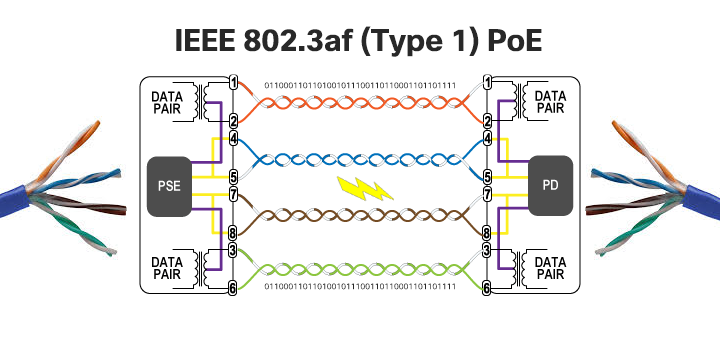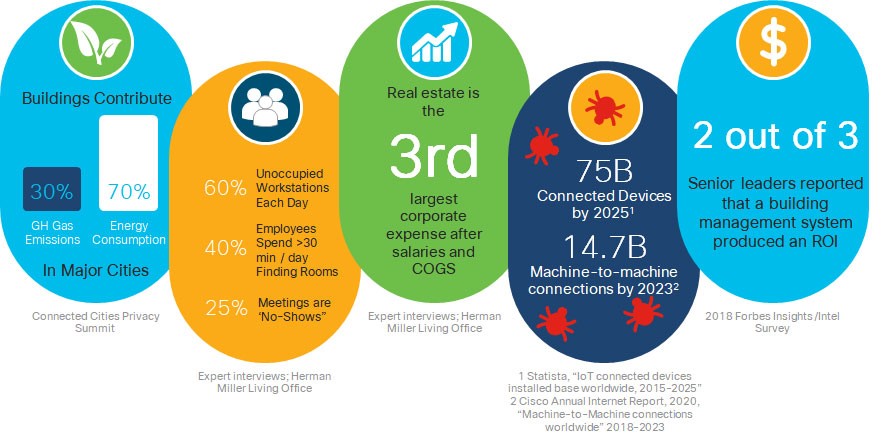The 4th utility has been described as connect all systems and services in a building from lighting, HVAC systems, elevators, fire, and alarms to IT networking systems to create a converged building-wide network infrastructure that can be controlled by a single group.
While there are many motivating factors pushing people to consider taking the leap from merely “connected” to “smart” there is one key technology that is powering the transition – Power over Ethernet or PoE.
What is PoE?
Power over Ethernet is a mechanism for delivering DC-based power to devices over copper Ethernet cabling, eliminating the need for a separate power supply and power outlet. While PoE does not add Ethernet data capabilities, it does offer expanded options on how and where Ethernet end devices can be placed.
Cisco developed and first delivered a proprietary version of PoE in 2000 to enable scalable and manageable power delivery for Cisco IP telephony handsets.
Emulating how traditional PSTN (Public Switched Telephone Network) “land-line” phones operate – delivering 48V DC power over the same copper cabling also used for communications – PoE initially took advantage of two wires in unused pairs of the four twisted pairs of copper wires found in typical Category 5 (Cat5) cable.
In 1999, both the IEEE group and Ethernet Alliance started working to standardize PoE to ensure interoperability across a broader range of connected powered devices (PD) and power source equipment (PSE). Ratified in 2003, the first of these standards, IEEE 802.3af, specified either spare pairs to be used (pins 4 and 5, or 7 and 8) or the data pairs (pins 1 and 2, or 3 and 6) to carry the power. The standard also includes a mechanism to protect devices that do not support PoE. This is done by adding a 25 kW resistor between the power pairs on the powered device and having the power source provide power only if something close to that resistive value is detected.

The value of PoE was quickly realized. Combining the power and data across a single cable not only reduced cabling but also improved safety and simplified installation – saving time and reducing cost.
This in turn amplified the need for more power to support a wider variety of end devices necessitating several additions and improvements to the original 802.3af standard. IEEE 802.3at, known as PoE+ or Type 2, was ratified in 2009 and increased power to 30W. In 2011, Cisco pioneered 60W Cisco UPOE® leveraging all four pair sets, which led to the IEEE 802.3bt standard defining 4PPoE Type 3.
In 2018, the 802.3bt standard was amended to increase the maximum power of 90W from the power source named 4PPoE Type 4. Each new standard provides for backward compatibility for all previous standards and notes the minimum power per port to be supplied to the PD. This minimum requirement accounts for power loss over the distance of the cable, with a maximum distance set at 100m.
While PoE has been a staple in offices world-wide, 90W PoE opens the door to a vast new world of options from LED lighting, kiosks, occupancy sensors, alarm systems and cameras to powering monitors, window shades, USB-C capable laptops and even air conditioners and refrigerators. USB-C capable laptops will likely be the biggest game changer, as the ability to eliminate the traditional “power brick” will delight end users and pave the way for a “single cable” workspace – power the desk phone, light, monitor and laptop.

It is almost certain that 90W PoE will herald major changes for smart building and industrial applications as well. The combination of data and power in one Ethernet cable connection will contribute to the already-rapid transition to Ethernet based industrial control systems as well as the consolidation of traditionally separated building OT (HVAC, lighting, security/alarming) with IT managed devices (IP phones, printers, computers, etc.).
What are the benefits of PoE?
Using Power over Ethernet provides a number of advantages during installation:
Time and cost savings – by reducing the time and expense of having electrical power cabling installed. Network cables do not require a qualified electrician to install. Reduction of power outlets required per installed device saves money. Reduces energy costs by allowing for centralized control over lighting, window shades and heating and cooling.
Flexibility – without being tethered to an electrical outlet, devices such as monitors, security cameras and wireless access points can be located wherever they are needed most and easily repositioned if needed.
Safety – Power delivery using PoE is designed to intelligently protect network equipment from overload, underpowering and incorrect installation, as well as eliminating the need to work with or around dangerous high voltage sources
Reliability – PoE power comes from a central and universally compatible source, rather than a collection of distributed wall adapters. It can be backed-up by an uninterruptible power supply (UPS) allowing for uninterrupted operation even during a power failure. Allows for devices to be easily disabled or reset from a centralized controller.
Scalability – having power available on the network means that installation and distribution of network connections is simple and effective.
To learn more about Cisco UPOE+, watch our Network Insiders Live Webinar
Powering the next-generation smart building with Cisco Catalyst 9000




This is indeed one of the game changer. It is amazing how Ethernet has evolved. Very nicely written article..